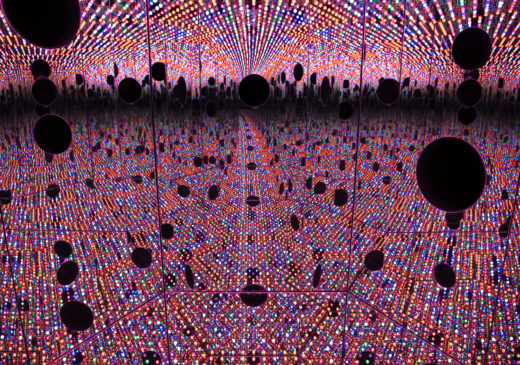
Yayoi Kusama (artist)
About
Yayoi Kusama was born in Matsumoto, Japan in 1929. She had little formal training, studying traditional Japanese painting only briefly (1948–49) at the Kyōto City Specialist School of Arts. She came to the United States in 1957 and lived in New York City for sixteen years, establishing herself as an avant-garde artist and becoming a major figure in performance, happenings, and Pop Art and Minimalist art movements, along with her peers and friends, Andy Warhol, Frank Stella, Joseph Cornell, and Donald Judd. She was particularly well known at that time for her infinity net paintings and “dots,” which continue to infiltrate her canvases, sculptures, prints, and clothing, and have even spread beyond into performance and installation. She returned to Japan in 1973, and in 1975 was voluntarily committed to a psychiatric hospital in Tokyo, where she still lives today, making work in the hospital and in various studio spaces she maintains in the neighborhood. Much of the inspiration for her artwork comes from a rather dark and difficult place: her mental health problems, beginning in her childhood and continuing through today. In her words:
My art originates from hallucinations only I can see. I translate the hallucinations and obsessional images that plague me into sculptures and paintings. All my works in pastels are the products of obsessional neurosis and are therefore inextricably connected to my disease. I create pieces even when I don’t see hallucinations, though.
An early hallucination manifested itself as a field of dots, and instead of becoming incapacitated by her illness, she turned to the arts as a creative treatment and solution. Her use of dots and their repetition have also become an obsession, numbering in the hundreds of thousands for some large-scale works of art. As she has said, “Our earth is only one polka dot among a million stars in the cosmos. Polka dots are a way to infinity.”
From Wikipedia
source contentArtwork by Yayoi Kusama

